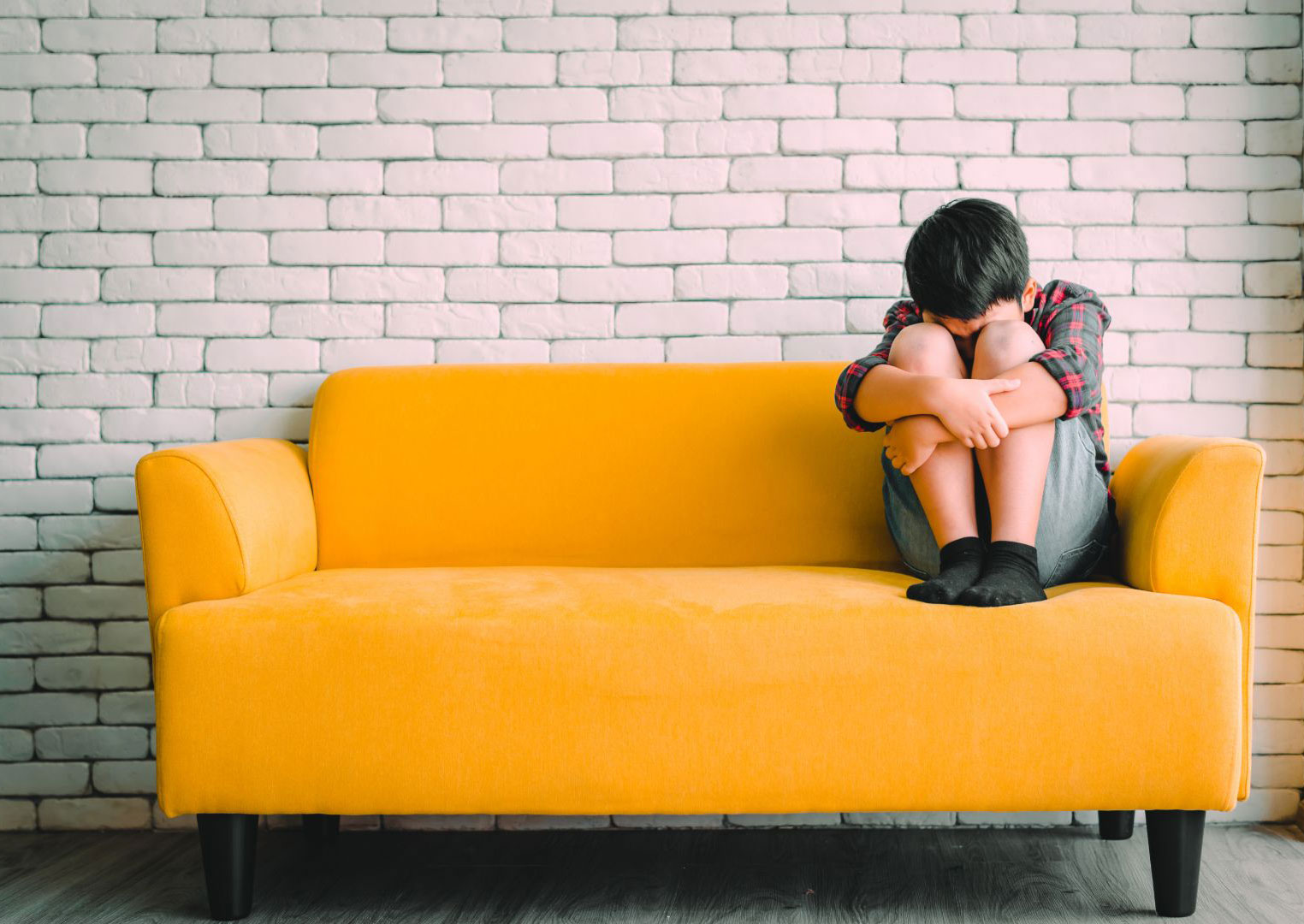There are many growing pains that children and parents experience as children grow up. With so many milestones to hit, new emotions being felt, and hormones surging through, most of us can agree that it is a very emotional process to go from childhood into adolescence. However, when a lot of people think about mental health, they would probably think about teenage age children being the ‘emotional’, angsty ones. We might also think about adults going through very difficult life transitions or stressors. But what about our young children?
While we might think that the emotions that younger children feel are valid, a lot of us are not putting as much thought into how long negative feelings might last, or how they can seriously affect development. Young children can be diagnosed with clinical depression as early as 3 years old, and about 2% of prepubertal children and 4%-8% of adolescents are diagnosed with depression. In addition, recent studies show that there is an increasing trend in depression among the youth. With numbers like these, it is important for us to recognize symptoms or behaviors that can clue us into depressive symptoms that young children may experience. You may be wondering how? Why is it even possible for such young children to feel this way? Of course, it is hard to accept it, but pediatric depression does exist, and being aware of its symptoms can help us intervene and help children who are struggling.
Early Life Stress
Early life stress is a term used to describe events or experiences in a young child’s life that causes physical or psychological stress to the point of not being able to cope. It is also known as childhood trauma, extreme stress, or adverse childhood experiences (ACE). These types of events can be things like physical abuse, sexual abuse, substance use issues, limited nutritional resources, tumultuous family experiences, injury, illness, death of a family member, etc.
Research has shown that 1 in 6 U.S. adults have experienced four or more types of ACEs, and at least 5 of the top 10 leading causes of death are associated with ACEs. Evidently, these statistics prove how prevalent these types of events are in our society, but we don’t seem to talk about it enough. It is easy to brush off the emotional struggles that young kids go through as immature and even baseless, especially due to their limited life experiences. However, stressors affect children just as they do anyone else, and it is very important to validate and monitor their emotions and life experiences, since they have such a profound impact on their development. Children have brains that are developing at a rapid pace, and experiencing positive or negative early life events deeply affects neural maturation. Early childhood is a period of high rates of synaptic growth and remodeling in the brain, so the types of experiences that they have in this time have long-lasting effects on how children learn to deal with stress, interact with others, and their adulthood outcomes.
Background on Childhood Depression
As for the clinical presentation of childhood depression, the symptoms are similar to those that are seen in depression in adults. Symptoms will vary due to age and developmental level, and symptoms experienced by young children may differ slightly to those in adolescents. For example, decreased appetite, weight loss, and hypersomnia are symptoms more common in adolescents, while children are more likely to experience low self-esteem and hopelessness. In 80-95% of children and adolescents who experience depression, comorbid psychiatric disorders are also prevalent. These comorbidities are commonly anxiety disorders, attention deficit hyperactivity disorder, and the most common is separation anxiety disorder.
It may be hard to believe that children as young as 3 years old can become clinically diagnosed with depression, since they are emotionally and cognitively undeveloped, but research as early as the 1980s have been able to dispute those claims. Clinicians and researchers are actually able to distinguish extreme behaviors from the norm in those early age groups, and they have deduced that 3 year olds do exhibit social and emotional behaviors that are developed enough to help them make informed diagnoses. First, if a child is suspected of having depression, clinicians will look at many things including reports from caregivers, parents, and teachers. The child and parent will go through clinical interviews where factors such as anxiety, ADHD, family environment, school problems, and risk of suicide will be evaluated. These interviews will continue on a regular basis to monitor progress. In addition, the child will be observed in two different play sessions with a primary and secondary caregiver, and administered a mental status exam.
Researchers have also designed the Pictorial Instrument for Children and Adolescents (PICA-R), which is a pictorial instrument for 6-16 year olds. Because young children might have a difficult time verbalizing how they feel or think, this tool allows clinicians to visually communicate with children and presents the child with a picture of a person that looks sad or distressed. When the child sees PICA-R images, they are asked questions such as, “Do you ever feel like him or her?”, “How often?”, “Do you get sad like him?”, “Do people tell you you look sad?”. The children can then respond using a five-point rated visual analog scale, basically using their hands to show “how much” they agree or disagree with what the clinician is asking them.
Symptoms
As mentioned above, prepubescent children do show core symptoms of depression like adolescents and adults do. It is also important to recognize that children who are neglected or abused are not the only ones who can become depressed. Even those who grow up in good, supportive families can still get depressed. There is an environmental factor to it, but there are also genetic vulnerabilities that can predispose children to experiencing depression. For example, if a young child with a genetic predisposition for depression experiences a significant stressful life event, it could send them into depression.
Some symptoms to look for in children who might have depression:
- Elevated sadness and irritability
- Spends more than two hours a day in a sad or irritable state
- Easily put into negative moods for sustained periods of time
- Does not experience pleasure from normal activities that they used to enjoy
- Change in eating patterns – eating much more or much less than they usually do
- Lack of energy – sluggish, tense
- Change in sleep patterns – sleeping much more or much less than they usually do
- Difficulty in paying attention
- Feeling worthless, hopeless, or guilty – taking responsibility for things that are not their fault
- Self-injury
- Aches and pains – stomach aches, headaches
- Self critical – “I can’t do anything correctly”, “I don’t have friends at all”
- School issues – drastic grade changes, refusing to go to school even if they are not sick
If unchecked, extreme depression can lead a child to think about suicide or even plan for it. For people aged 10-24, suicide is among the leading causes of death. Therefore, it is really important for us to stay vigilant about checking in with our children, pay attention to the changes that seem out of the ordinary, and support/believe them when they are experiencing ACEs. This can be difficult because some children are not willing to or unable to voice their helplessness and damaging thoughts. They might not even appear to be sad. A child with depression may become unmotivated, withdrawn, and prone to creating trouble. These symptoms may be perceived as laziness or expected child-like behaviors, so parents and caregivers should be mindful about what could be typical or atypical for their child and their normal behaviors.
Treatment
Professionals suggest that parents and caregivers talk to their pediatrician if they suspect that their child might be experiencing depression. If a child has been displaying persistent negative moods for more than a few weeks, parents can set up a visit with their child’s doctor. Of course, depression might not always be the explanation for behavioral or emotional changes, but letting them know all of their physical and mental symptoms (along with any environmental stressors) may help the doctor make an informed diagnosis or referral. Having a thorough, careful evaluation will help get the best diagnosis.
After consultations and professional review, the most suggested way to treat depression in young children is through behavioral therapy. Behavioral therapy can include child therapy, family therapy, or a mix of the two. School counselors can even be included within the treatment plan. What really makes an impactful difference is including parents when treating very young children. Creating a treatment plan along with a mental health professional that specializes in young-aged children is very important for parents to prioritize if their child is going through depression. Cognitive-behavioral therapy (CBT) is another type of therapy that is shown to really help older children who are struggling with anxiety and depression. It may help them change their negative thought patterns into positive thinking, just as an adult who is going through CBT would hope to do as well. Medication is not typically suggested as a first solution, but can be discussed with a professional if it may aid in the therapy process. Lastly, other treatments include improving environmental factors to make the child feel less stressed. Things like improving nutritional value of their food, providing physical activity opportunities, ensuring sufficient sleep, implementing predictable routines, and surrounding them with a strong support system can make all the difference as well.







